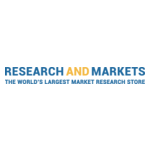DUBLIN–(BUSINESS WIRE)–The “Intraocular Lens Market By Type, By Material, By End User: Global Opportunity Analysis and Industry Forecast, 2021-2031” report has been added to ResearchAndMarkets.com’s offering.
The intraocular lens market was valued $3,777.16 million in 2021 and is expected to reach $6,535.51 million by 2031, growing at a CAGR of 5.6% from 2022 to 2031.
Intraocular lenses are type of ophthalmic implants, which are used in eye surgeries. Intraocular lenses are synthetic lenses implanted inside the eye that substitute the focusing power of a natural lens, which are surgically removed. These are used to treat myopia, astigmatism, or cataracts.
Increase in prevalence of cataract and rise in initiatives taken by government to eliminate avoidable blindness drive the growth of the global intraocular lens market. Moreover, rise in adoption of premium lens, owing to their enhanced visual performance ensures reduced rates of astigmatism, further propel the growth of the intraocular lens market. Multiple types of intraocular lenses such as traditional monofocal lens and premium lens are used to restore the vision of the eye after the cataract is removed.
Although standard monofocal lens provides good distance vision, reading glasses are still required for near or immediate work. This, in turn, has led to the increased adoption of the premium lens, which highly reduces the dependency on glasses after the surgery. However, monofocal lens are used to correct the vision at certain distance, while premium IOLs have the ability to correct both distance and close-up vision which has further increased the demand for premium intraocular lens.
Furthermore, standard monofocal IOLs are ineffective in treating patients with astigmatism while on the other hand, premium lenses have the ability to reduce astigmatism or presbyopia, thereby allowing the patients to see clearly across all focal points and distances. All these factors cumulatively have increased the demand for premium intraocular lens However, unfavorable reimbursement scenario for premium lens and postoperative complications such as refractive errors hinder the market growth.
Key industry players are undertaking initiatives such as agreement, partnership, acquisitions, and product launch to strengthen their market presence. For instance, in July 2021, Johnson & Johnson received approval from the US FDA for its Tecnis Synergy and Tecis Synergy Toric II intraocular lenses.
Moreover, according to the National Eye Institute, 2020 there were about 7.7 million diabetic retinopathy cases and 24 million cataract cases in U.S. leading to increase in demand for intraocular lens further driving the growth of the market.
In addition, the demand for intraocular lens has increased over the years, due to surge in cases of diabetic retinopathy and congenital cataract. With rise in incidence of diabetes mellitus, there is high risk of cataract. Furthermore, higher glucose levels in the eye fluid result in swelling of the lens, which, in turn, affects the clarity of vision.
Moreover, the lens also has an enzyme called sorbitol, which upon getting accumulated, causes the lens to become less clear, and thus increases the risk of cataract. According to the article published by the National Center for Biotechnology Information (NCBI) in 2020, cataract occurs 2-5 times more frequently in patients with diabetes. In addition, the article stated that more than 20% of all cataract procedures are performed for diabetic patients.
Key Benefits For Stakeholders
- This report provides a quantitative analysis of the market segments, current trends, estimations, and dynamics of the intraocular lens market analysis from 2021 to 2031 to identify the prevailing intraocular lens market opportunities.
- The market research is offered along with information related to key drivers, restraints, and opportunities.
- Porter’s five forces analysis highlights the potency of buyers and suppliers to enable stakeholders make profit-oriented business decisions and strengthen their supplier-buyer network.
- In-depth analysis of the intraocular lens market segmentation assists to determine the prevailing market opportunities.
- Major countries in each region are mapped according to their revenue contribution to the global market.
- Market player positioning facilitates benchmarking and provides a clear understanding of the present position of the market players.
- The report includes the analysis of the regional as well as global intraocular lens market trends, key players, market segments, application areas, and market growth strategies.
Key Market Segments
By Type
- Monofocal Intraocular Lens
- Premium Intraocular Lens
By Material
- Polymethylmethacrylate
- Silicone
- Hydrophobic and Hydrophilic Acrylic Materials
By End User
- Hospitals
- Ambulatory Surgery Centers
- Ophthalmology Clinics
- Eye Research Institutes
By Region
- North America
- U.S.
- Canada
- Mexico
- Europe
- Germany
- France
- U.K.
- Italy
- Spain
- Rest of Europe
- Asia-Pacific
- Japan
- China
- Australia
- India
- South Korea
- Rest of Asia-Pacific
- LAMEA
- Brazil
- Saudi Arabia
- South Africa
- Rest of LAMEA
Key Market Players
- Alcon
- Bausch Health Inc.
- Carl Zeiss Meditech
- EyeKon Medical Inc
- Humanoptics
- Hoya Corporation
- Johnson & Johnson
- Lenstec Inc.
- Rayner Intraocular Lens Ltd
For more information about this report visit https://www.researchandmarkets.com/r/r4v4mv.
Contacts
ResearchAndMarkets.com
Laura Wood, Senior Press Manager
press@researchandmarkets.com
For E.S.T. Office Hours Call 1-917-300-0470
For U.S./ CAN Toll Free Call 1-800-526-8630
For GMT Office Hours Call +353-1-416-8900



